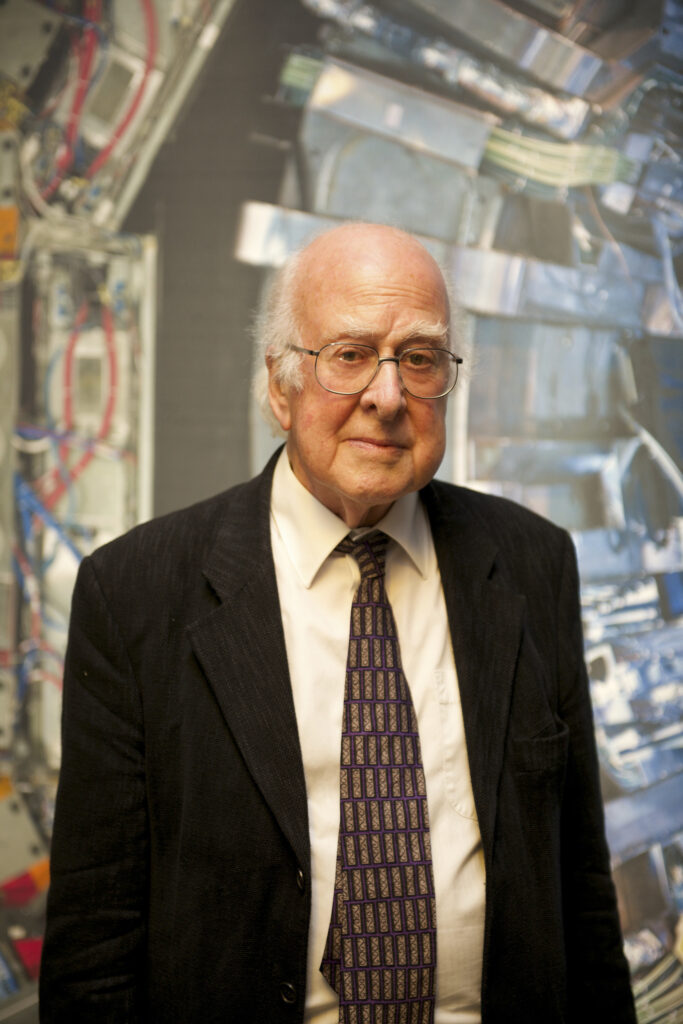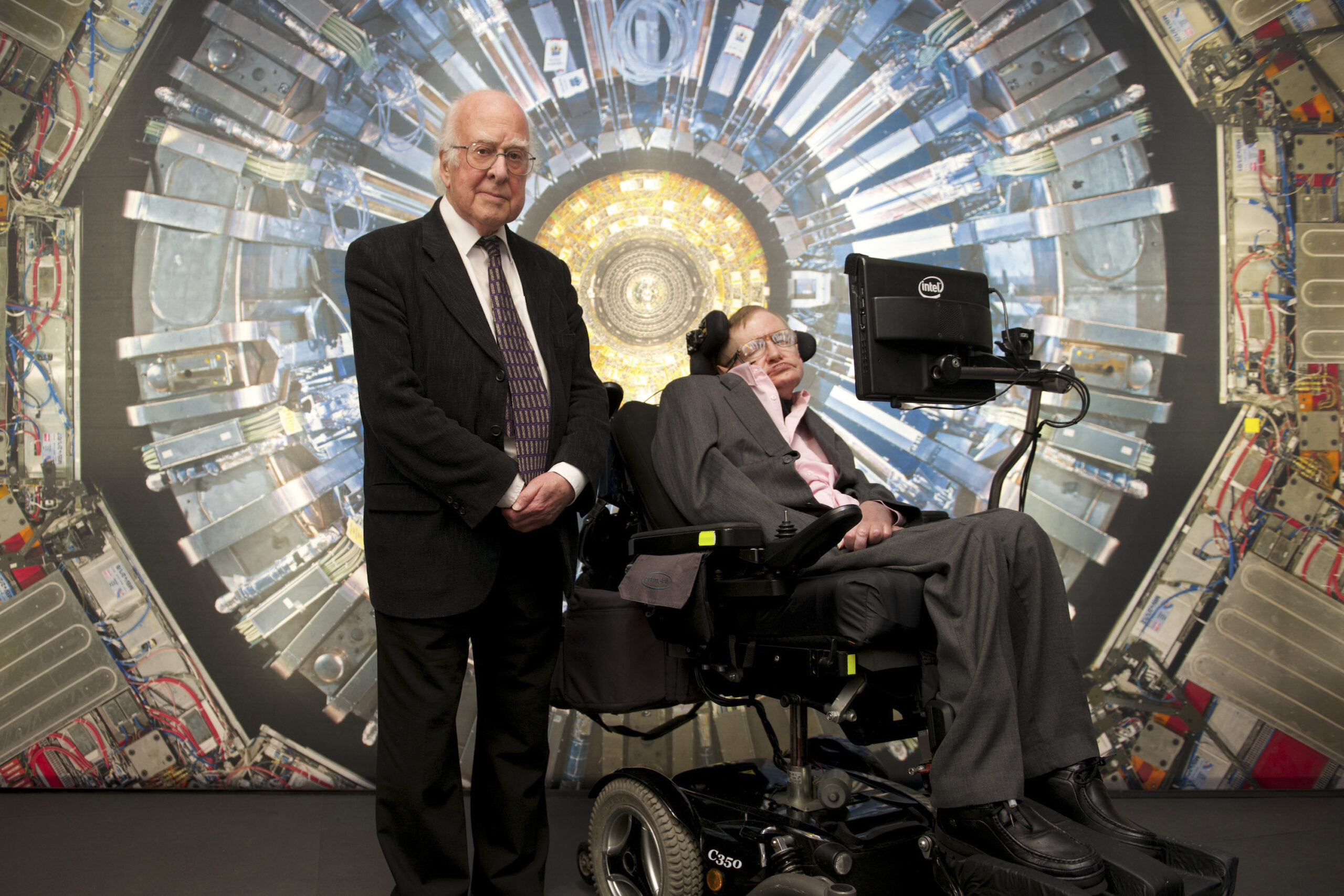The story of Peter Higgs, who has just died aged 94, is one about the triumph of the human imagination: by articulating the power of thought through mathematics, Higgs captured the deepest workings of the cosmos.

In July 2012, two separate research teams of thousands of researchers each at CERN’s £5 billion Large Hadron Collider reported evidence of a new particle thought to be the Higgs boson, technically a ripple in an invisible energy field that gives most particles their mass.
Though only one of those who predicted the existence of the particle in the 1960s, the modest emeritus professor from Edinburgh University became synonymous with the quest to find what is now called the Higgs Boson.
The discovery underlined the remarkable vision of the theoretical work that Higgs, Francois Englert and others did with pen and paper half a century earlier, one that inspired a staggering feat of engineering in the guise of the Large Hadron Collider particle accelerator, celebrated in an exhibition that Higgs himself helped launch at the Science Museum in 2013.
The Higgs boson marked the final piece of the Standard Model, a framework of theory developed from the 1970s that describes the interactions of all known subatomic particles and forces, with the exception of gravity.
The Standard Model contains many other particles – such as quarks and W bosons – each of which has been found in the last four decades using vast particle colliders, but the Higgs had remained elusive.
Strictly speaking, however, it is the Higgs field that gives most particles mass and the Higgs Boson is a wave travelling in that field – so finding the Higgs Boson was akin to seeing ripples in the Higgs field.
A former Science Museum chair and Science Minister, Lord Waldegrave, famously offered a bottle of vintage champagne to anyone who could explain the Higgs boson on one side of A4 paper, and one winner had likened the mechanism to the effect of former Prime Minister Thatcher as she moved through a cocktail party of political workers.
The Higgs boson was seen as central pillar of the Standard Model and not finding it would have undermined our current understanding of the universe.
The world’s most famous scientist at the time Prof Stephen Hawking, made a $100 bet he against the discovery because he thought that physics would be ‘far more interesting’ if the Standard Model crumbled.
However, Higgs, who refused to gamble, told me just before the LHC powered up that he would have been puzzled and surprised if the LHC had failed in its particle quest. ‘If I’m wrong, I’ll be rather sad. If it is not found, I no longer understand what I think I understand.’
Hawking lost the bet when the announcement came from CERN on 4 July 2012 by two rival teams and Higgs declared: ‘It’s really an incredible thing it’s happened in my lifetime.’
With Belgian François Englert, Higgs shared the 2013 Nobel Prize for Physics ‘for the theoretical discovery of a mechanism that contributes to our understanding of the origin of mass of subatomic particles, and which recently was confirmed through the discovery of the predicted fundamental particle, by the ATLAS and CMS experiments at CERN’s Large Hadron Collider.’
Although the identity of the Nobel winners is always a closely-guarded secret, many had speculated that those who played a central role in discovery of the long-sought Higgs, notably the emeritus Edinburgh professor himself, were leading contenders for a place in history.
The Science Museum was so confident that the Large Hadron Collider would change our view of nature that it invested more than £1 million, and worked closely with the European Organization for Nuclear Research, CERN, to celebrate this epic undertaking with its exhibition, Collider: step inside the world’s greatest experiment, which opened to the public on 13 November, 2013, a few weeks after Higgs shared the Nobel.
Frank Close, Professor Emeritus of Theoretical Physics at the University of Oxford, recalled: ‘Peter Higgs and his boson were both elusive….his boson took 48 years to appear, and when the Nobel was announced, he had disappeared to his favourite sea food bar in Leith.’
Both Higgs and Hawking came to the museum to celebrate the opening of Collider, after a Parliamentary event. The day began with Higgs answering questions from a lucky group of students from across the UK in our IMAX theatre – with thousands more watching the Guardian live stream online.

The afternoon featured a spectacular double-bill of science and culture, with novelist Ian McEwan and theoretical physicist Nima Arkani-Hamed in conversation and an audience with Stephen Hawking.
For the Collider launch event, the brewery Fuller’s produced a special Higgs-themed London Pride beer, the drink he had used to celebrate his momentous discovery. I can remember helping him to a taxi with bottles of the stuff with one of the Collider curators, Harry Cliff.
Higgs went on to be awarded a fellowship of the museum by the then chair of Board of Trustees, Doug Gurr, now Director of the Natural History Museum, and the Collider exhibition went on an international tour and was seen by millions of people.
Sir Ian Blatchford, Director and Chief Executive of the Science Museum Group, noted: ‘Peter Higgs was a brilliant scientist who helped us to understand the fundamental building blocks of our universe. We were honoured to celebrate his discovery of the Higgs boson through the Collider exhibition at the Science Museum and his work continues to inspire people today.’
Higgs and the particle that bears his name leave an enduring legacy, according to Harry Cliff, who now works at the High Energy Physics Group at the Cavendish Laboratory, Cambridge: ‘Not only does the Higgs boson tie together our understanding of the fundamental particles that make up the world, it also presents us with several deep puzzles that will keep me and my colleagues busy for decades to come.’